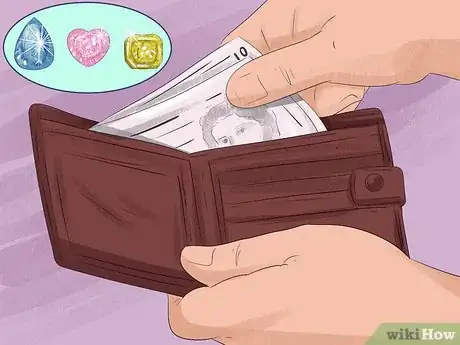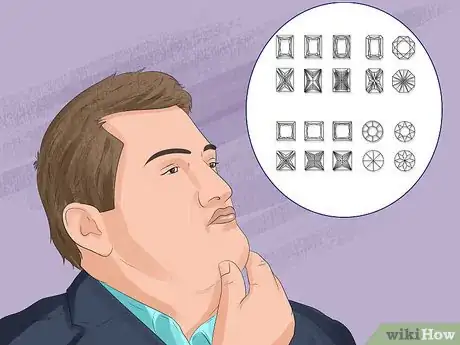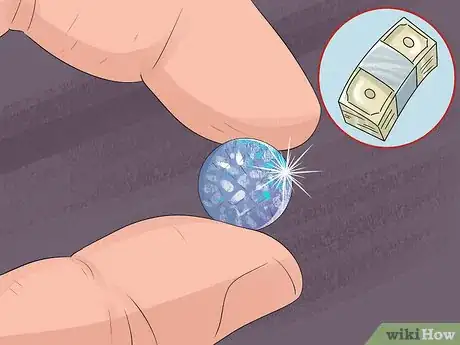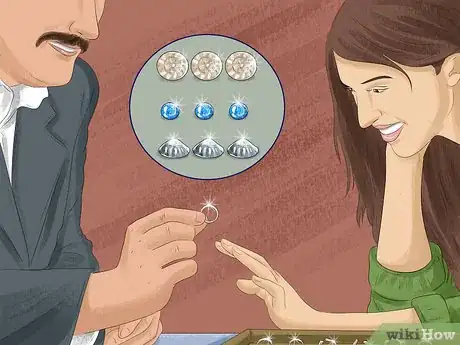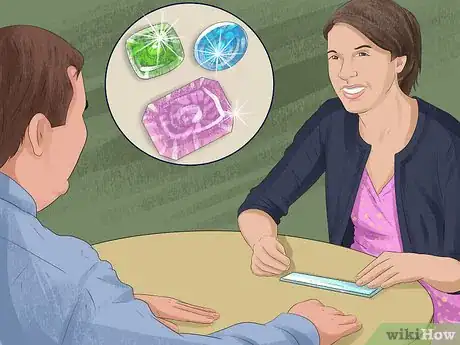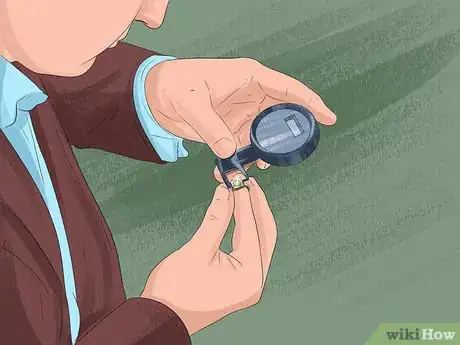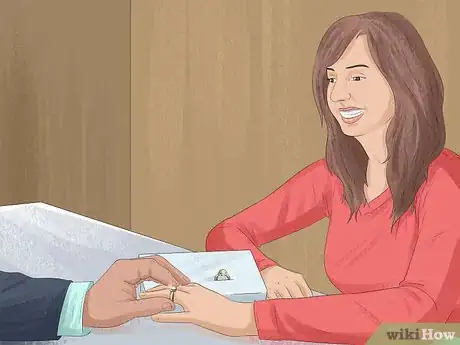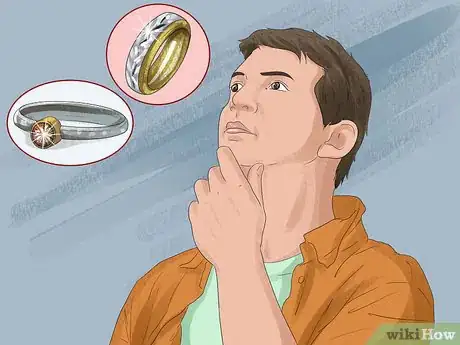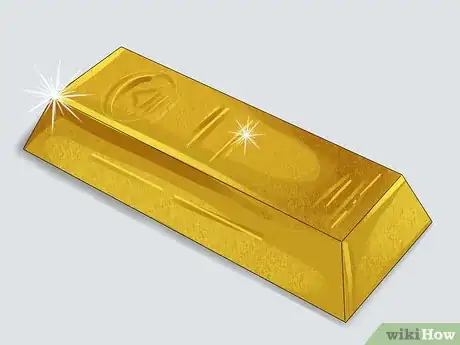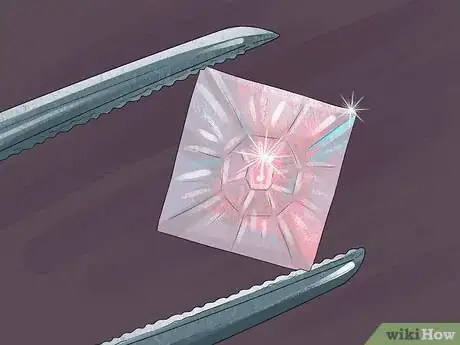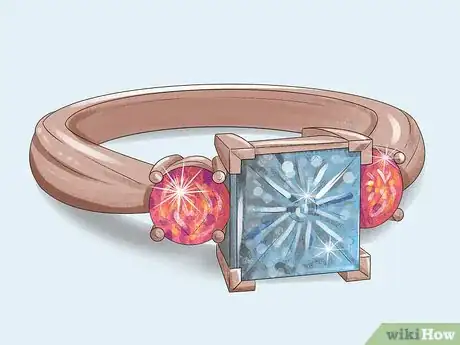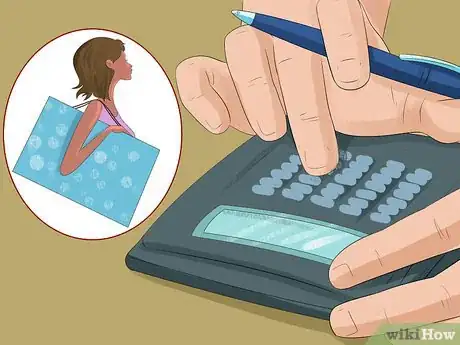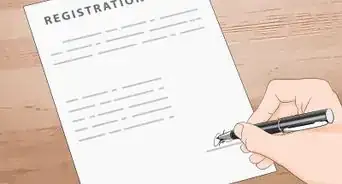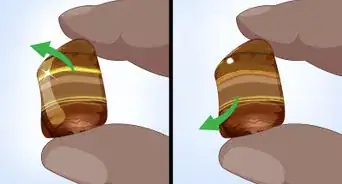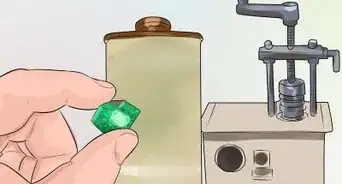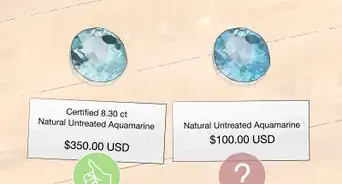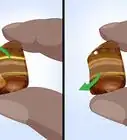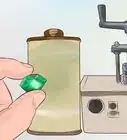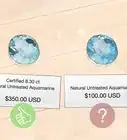This article was co-authored by Kennon Young. Kennon Young is a Master Gemologist Appraiser and the Owner of Vermont Gemological Laboratory in Burlington, Vermont. With over 20 years of experience in the industry, Kennon and his team specialize in handmade engagement rings, wedding bands, and custom jewelry. He attended the Revere Academy of Jewelry Arts, the Gemological Institute of America, and the Rhode Island School of Design Extension. He is a Jewelers of America (JA) Certified Bench Jeweler Technician and received the highest credential in the jewelry appraisal industry, the ASA Master Gemologist Appraiser, in 2016.
wikiHow marks an article as reader-approved once it receives enough positive feedback. In this case, 100% of readers who voted found the article helpful, earning it our reader-approved status.
This article has been viewed 363,590 times.
A diamond's quality and price are determined by a set of four conditions known as the four C's: cut, clarity, color, and karat. When selecting a diamond, look for one that balances these four qualities without straining your budget. Perfect quality diamonds are rare and extremely expensive, but you can select a slightly less perfect diamond that still appears brilliant to the naked eye.
Steps
Determining Cut
The cut determines a diamond's shape and brilliance. A well-cut diamond reflects light from one facet to another. If cut too deep or too shallow, light escapes from the diamond prematurely, reducing the stone's quality.
-
1Pick out the right shape for you and your budget. While cut refers more to quality and level of brilliance, the shape is one aspect of the cut. Review the possible shapes available on the market, and choose the one you like best. If buying a diamond for someone else, ask his/her opinion before selecting a shape, or bring a trusted friend/family member.
- Select a popular, classic shape if you have no one to ask. The most popular shapes are round brilliant, princess, and cushion cut.
- Consider a non-traditional shape if the receiver has a non-traditional personality. Also, note that less common shapes can be 30%, for the same karat weight and quality! Less common shapes that are still fairly popular include marquise, oval, pear, and heart.
-
2Choose the highest quality of cut you can afford. A diamond's cut determines the vast majority of its brilliance, and many consider the cut to be the most important factor when choosing a diamond. Ask the jeweler to see the Gemological Institute of America's (GIA’s) diamond grading report for any diamond you consider purchasing. This report will give you a rough grade on cut:
- Select an "Ideal Cut" diamond for the highest level of perfection.
- Choose a "Very Good" or "Excellent" grade diamond for a slightly less expensive yet high-quality stone.
- Consider a "Good" grade if you want to balance the other C's and still stick to a budget.
- Never purchase a fair to poor quality diamond, especially for engagement rings and other gifts. Diamonds at these levels severely lack brilliance.[1]
Advertisement -
3Consider the number of chevrons. The pavilion side is the lower side of a diamond, which isn’t visible enough and has no impact on its sparkling style. Chevrons are of particular importance when considering the princess cut diamonds. These are the facets at the pavilion side of the diamond surrounding the main pavilion. Most princess cuts have two, three or four chevrons. The more the chevrons, the more the light gets reflected upon.[2]
- There is no "right" number of chevrons, just personal preference. More chevrons lead to a more multifaceted look, whereas less has a smoother look.[3]
Choosing Color
The highest quality diamonds are colorless, since colorless stones are rare and reflect light better than tinted diamonds. Most diamonds have slight tints of yellow, which are often impossible to see with the naked eye. That said, beauty only matters to beholder (or the betrothed), so don't discount colored diamonds if you like them.
-
1Purchase a diamond that balances colorlessness with the price. Since most tints are extremely difficult to see, a higher grade for color does not make much difference in quality. It can, however, make a huge difference in price.
- Select a D grade (blue white) for an absolutely colorless diamond only if the price is of no concern.
- Look E or F diamonds ("ice white" or "fine white," respectively) if you cannot afford a D grade diamond but still want a stone that is colorless with any band, on any skin tone.
- Diamonds rated H, I, and G are considered white, with H representing the top quality white. Note that, while these diamonds appear completely colorless, they do have a light yellow tint against a bright white background. That said, this tint disappears when set into a metal band, as no metal is solid white.
- Though still white or colorless against most backgrounds, J - M diamonds run from "top silver" (J) to "light cape" (M), a cheaper silver coloring. When set on a colored band like gold, they appear colorless, though they may have a tint on whiter metals like platinum.
-
2Ask the jeweler about a diamond's fluorescence. Fluorescence appears when a diamond is exposed to ultraviolet light, but usually has no effect on a diamond in regular light conditions. On rare occasions, strong fluorescence can alter the appearance of a diamond's color, sometimes causing it to look milky or oily.
- Consider a diamond with medium fluorescence or strong fluorescence if on a tight budget, since these diamonds are often discounted.
-
3Consider a "fancy" diamond, a type of rare stone with an especially deep hue. This is for the high-rollers out there, as these diamonds are expensive. They will, however, stand out from the crowd. Red and pink fancy diamonds are rare, beautiful, and expensive -- and the most popular "fancy" diamond.
Understanding Carats
The weight, or size, of the diamond is measured in karats. The more karats a diamond has, the more expensive it will be, and the bigger it will be.
-
1Take karat weight into consideration last. This does not affect the quality of the stone in any way, so a heavier weight does not necessarily indicate a higher quality stone. Note, however, that this may not be possible on a budget. Do you want a slightly smaller stone at higher quality, or the opposite?[6]
-
2Consider selecting an uncommon size karat to save money without sacrificing quality. The most common sizes for engagement rings are 1/2 karat, 1 karat, and 2 karat. People often choose common karat weights, which are known in the industry as ‘magic weights’. Because they are common, the price of diamonds at these weights is usually disproportionately higher than diamonds just below the magic weight e.g. a 0.98 karat diamond may be significantly less expensive than a 1 karat diamond, with no visible difference in size.
-
3If buying an engagement ring or gift, find out what the recipient prefers in size. Not all women prefer many karats. Some may place quality over size while others may be willing to sacrifice a bit of quality for a more noticeable diamond.
- Ask the recipient herself about her preference.
- Ask close friends or family about the recipient's preference.
-
4Consider the size of the wearer's hand if buying a diamond ring. Women with more petite hands may prefer the look of a smaller stone to larger stones that have a tendency to overwhelm. However, women with larger hands may drown out a small stone, making it appear smaller than it really is.
Selecting Features to Go With Your Diamond
-
1Choose a band metal. Make a list of the precious and long-lasting metals. Here, it is important that the band material lasts just as long as the stone. Metals like gold, silver and platinum are not only beautiful but last long for years. Choosing among them is usually a balance of beauty and budget.
- Gold is perhaps the most common band, as it looks great with any stone or skin tone. Look for gold and its variants like yellow, rose and white gold to further customize the ring to your hand.
- Silver is yet another metal that is affordable and suits almost every skin tone. Out of the various variants of silver, sterling silver is the best comprising of 92.5 percent pure silver, and 7.5 percent mixed alloys. As such, it is the most affordable and a durable ring band option.
- You can go for platinum bands if budget is not a problem for them. Platinum is considered as the most lustrous of all precious metals and is getting widespread popularity for diamond and engagement rings.
-
2Know that higher karat rates have stronger, more scratch resistant bands. Considering karat weight when making gold band selection is important. 24 karat gold has the highest amount of pure gold. Moreover, due to the higher amount of pure gold, 24 and 22 karat gold are softer than 18 or 14 karat gold. creating a greater chance for jewelry to scratch or bend.
-
3Pick a setting. Assuming you're choosing a diamond for a ring, you will have a choice about what kind of setting to place it in. The cut you picked will be a big factor here. For example, on a princess cut diamond, you'll want to choose a setting that protects the stone's corners.[7]
-
4Add accent stones if desired. You'll want to make sure you match the color and grade of any accent diamonds to the center stone since that is your focal point. These are usually smaller diamonds or even other colored jewels.[8]
Shopping for a Diamond
-
1Set a budget before you start shopping. Doing so will help you choose the highest quality diamond you can find for your money. Diamonds are expensive, and salespeople might try to upsell you if you're not prepared. Make a budget and stick with it.[9]
- Do a little online research before heading to the mall to judge prices.
- It is not terrible to shop over two days. Use the first to see prices across different jewelers, then come back the next day to make your purchase.
-
2Do your research. Learn as much as you can about diamond quality and price to prevent yourself from getting cheated. This can also help you bargain a little bit, especially if you know the grades, ratings, and color information in the steps above.
-
3Shop around to compare prices, and check online for deals. Visit several different jewelers for a wider selection and price range. Always ensure that you compare prices, and that a price that you are offered is fair. It’s a good idea to compare any price that you are quoted in a brick and mortar jeweler to the price of an identical diamond from a reputable online retailer, as can be up to 50% savings to be found on an identical diamond by buying online.[10]
-
4Ask to see official grading reports, such as a GIA report, before purchasing a diamond. While your personal preference is important, don't let yourself get scammed into paying more than you want. Once you know you like the diamond, check out the grades on the GIA report before plunking down a ton of money.
Expert Q&A
Did you know you can get expert answers for this article?
Unlock expert answers by supporting wikiHow
-
QuestionHow do I pick the right diamond?
 Kennon YoungKennon Young is a Master Gemologist Appraiser and the Owner of Vermont Gemological Laboratory in Burlington, Vermont. With over 20 years of experience in the industry, Kennon and his team specialize in handmade engagement rings, wedding bands, and custom jewelry. He attended the Revere Academy of Jewelry Arts, the Gemological Institute of America, and the Rhode Island School of Design Extension. He is a Jewelers of America (JA) Certified Bench Jeweler Technician and received the highest credential in the jewelry appraisal industry, the ASA Master Gemologist Appraiser, in 2016.
Kennon YoungKennon Young is a Master Gemologist Appraiser and the Owner of Vermont Gemological Laboratory in Burlington, Vermont. With over 20 years of experience in the industry, Kennon and his team specialize in handmade engagement rings, wedding bands, and custom jewelry. He attended the Revere Academy of Jewelry Arts, the Gemological Institute of America, and the Rhode Island School of Design Extension. He is a Jewelers of America (JA) Certified Bench Jeweler Technician and received the highest credential in the jewelry appraisal industry, the ASA Master Gemologist Appraiser, in 2016.
Master Gemologist Appraiser
References
- ↑ http://www.lumeradiamonds.com/buying-diamonds/choose-a-diamond
- ↑ http://beyond4cs.com/shapes/princess/chevrons/
- ↑ http://beyond4cs.com/shapes/princess/chevrons/
- ↑ http://ringspo.com/diamond-clarity/
- ↑ http://www.lumeradiamonds.com/buying-diamonds/choose-a-diamond
- ↑ http://www.lumeradiamonds.com/buying-diamonds/choose-a-diamond
- ↑ http://www.jewelrywise.com/engagement-wedding/article/choosing-the-right-metal-for-your-engagement-ring
- ↑ http://www.lumeradiamonds.com/buying-diamonds/choose-a-diamond
- ↑ http://www.forbes.com/2007/07/26/celebrity-bling-jewelry-biz-cz_pr_dl_0726diamond.html
About This Article
To choose a diamond, get the highest quality cut you can afford since this will impact the gem’s brilliance. An "ideal cut" is the best quality, but a "good cut" is cheaper if you're on a budget. Additionally, ask a jeweler for the diamond's clarity grade, which refers to how flawless the stone may or may not be. If you're looking for a flawless gem, you'll want a grade of FL or IF, but know that these gems will also be the most expensive due to their rarity. To learn how shop for a good quality diamond, keep reading!
